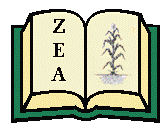Files
Download Full Text (829 KB)
Description
This very early (if not the first) account of Native American history and myth, written and published in English by an Indian, is valuable on that score alone. This online electronic edition (in pdf format) was transcribed from digital images of the 1828 edition in the Library of Congress. No attempt has been made to correct or regularize spelling and punctuation or to standardize the language of the original; some typographical errors have been corrected, and these are listed in the notes.
The history begins at the Creation, with the twin brothers Enigorio and Enigonhahetgea (the good spirit and evil spirit) and their creatures, the Eagwehoewe (the people) and their enemies the Ronnongwetowanca (giants). The earliest people were championed by the hero Donhtonha and the less heroic Yatatonwatea and plagued by the mischeivous Shotyeronsgwea. These early people were also threatened by (but survived) the Big Quisquiss or mammoth, the Big Elk, the great Emperor who resided at the Golden City to the south, the great horned serpent of Lake Ontario, and the blazing star that fell.
More recently, the creation was renewed and restored, and the Six Nations situated and intermittently rescued by the intervention of Tarenyawagon, the Holder of the Heavens.
The Five Nations were a confederacy, or Ggoneaseabneh (Long House), consisting of the 1. Teakawrehhogeh or Tehawrehogeh (Mohawks) 2. Newhawtehtahgo or Nehawretahgo (Oneidas) 3. Seuhnaukata or Seuhnowkahtah (Onondagas) 4. Shoneanawetowah (Cayugas) 5. Tehooneanyohent or Tehowneanyohent (Senecas) They were later joined by the Kautanohakau (Tuscaroras) to make the Six Nations.
Their human enemies at times included the Sohnourewah (Shawnees), Twakanhahors (Mississaugers), Ottauwahs, Squawkihows, Kanneastokaroneah (Eries), Ranatshaganha (Mohegans), Nay-Waunaukauraunah, and Keatahkiehroneah.
Their monstrous enemies included the Konearaunehneh (Flying Heads), the Lake Serpent, the Otneyarheh (Stonish Giants), the snake with the human head, the Oyalkquoher or Oyalquarkeror (the Big Bear), the great musqueto, Kaistowanea (the serpent with two heads), the great Lizard, and the witches introduced by the Skaunyatohatihawk or Nanticokes.
Important figures in the history include Atotarho I, first king of the Five Nations, his successors Atotarho II–XIII, the war chiefs Shorihowane and Thoyenogea, Sauwanoo, Queen Yagowanea, and the allied or friendly Dog Tail Nation and the Kauwetseka.
Cusick gives particular attention to geographical details, including the Kanawage or St. Lawrence River, Yenonanatche or Mohawk River, Shawnaytawty or Hudson River, Ouauweyoka or Mississippi River, Onyakarra or Niagara River, Kaunsehwatauyea or Susquehanna River, Kuskehsawkich or Oswego Falls, Jenneatowake or Canandaigua Lake, Kauhagwarahka or Lake Erie, Goyogoh or Cayuga Lake, Geatahgweah or Chatatique Lake, and the forts at Kedauyerkawau (now Tonewanta plains), Kauhanauka, and the village of Kaunehsuntahkeh.
Cusick’s Sketches of Ancient History of the Six Nations has been proposed as a possible source for or influence on the Book of Mormon; it has also been advanced as evidence for the existence of Bigfoot and the Lake Champlain monster.
David Cusick was born around 1780, probably on the Oneida reservation in upstate New York. He served in the War of 1812, during which his village was burned by the British. He was a physician and painter and student of Iroquois oral tradition. He published the first edition of Sketches of Ancient History of the Six Nations as a 28-page pamphlet at Lewiston, NY, in 1827. He re-issued it the following year with additional text and four of his own engravings, and that edition provides the text and illustrations reprinted here. Cusick is thought to have died around 1840. The Sketches was republished in 1848 (Lockport, NY) and again in 1892 (Fayetteville, NY).
Publication Date
1828
Disciplines
American Studies
Recommended Citation
Cusick, David, "David Cusick's Sketches of Ancient History of the Six Nations" (1828). Zea E-Books in American Studies. 10.
https://digitalcommons.unl.edu/zeaamericanstudies/10


